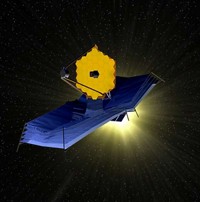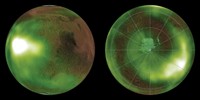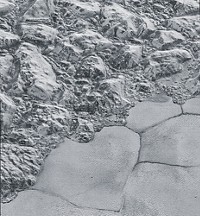Advertisement
Grab your lab coat. Let's get started
Welcome!
Welcome!
Create an account below to get 6 C&EN articles per month, receive newsletters and more - all free.
It seems this is your first time logging in online. Please enter the following information to continue.
As an ACS member you automatically get access to this site. All we need is few more details to create your reading experience.
Not you? Sign in with a different account.
Not you? Sign in with a different account.
ERROR 1
ERROR 1
ERROR 2
ERROR 2
ERROR 2
ERROR 2
ERROR 2
Password and Confirm password must match.
If you have an ACS member number, please enter it here so we can link this account to your membership. (optional)
ERROR 2
ACS values your privacy. By submitting your information, you are gaining access to C&EN and subscribing to our weekly newsletter. We use the information you provide to make your reading experience better, and we will never sell your data to third party members.
Astrochemistry
There is water on the moon
New observations find H₂O can survive the intense solar radiation on the moon
by Sam Lemonick
October 28, 2020
| A version of this story appeared in
Volume 98, Issue 42

Using a telescope flying on a 747, astronomers say they have definitive evidence of water molecules on sunlit moon surfaces (Nat. Astronomy 2020, DOI: 10.1038/s41550-020-01222-x).
It wasn’t long ago that scientists thought the moon was completely dry. Then, in 2009, a trio of papers reported spectroscopic evidence of O–H bonds in sunny areas, although researchers couldn’t say if these belonged to water or hydroxyl substituents on other molecules. In 2018, scientists reported ice in shaded craters.
The 2009 results were based on IR signals near 3 µm because that’s what the spacecraft used could measure. Water has an unambiguous IR signal at 6 µm.
Honniball and her colleagues observed the 6 µm signal on the sunlit lunar surface at high southern latitudes but not at lower latitudes. Previously, scientists assumed solar radiation would either destroy water molecules or push them to colder regions. Based on the new data, the team calculated that the moon’s surface is 100–400 parts per million water. But Honniball stresses that the moon is still a very dry place: its surface is probably about 100 times as dry as Sahara Desert sand.
The water they observed is neither ice nor liquid; it exists as lone molecules. The researchers don’t know whether these molecules are trapped inside glasses formed by meteorite impacts or tucked between grains of lunar dust. Honniball says they are planning follow-up observations that might nail that down. Water could be brought to the moon on meteorites, form during meteorite impacts, or come from inside the moon.
The group has applied for more trips on SOFIA to try to map the majority of the moon’s near side at different times. That could reveal more about the water molecules’ location and sources and might also show how water moves around the moon’s surface. “They deserve more time” to answer these questions, Sunshine says.





Join the conversation
Contact the reporter
Submit a Letter to the Editor for publication
Engage with us on Twitter